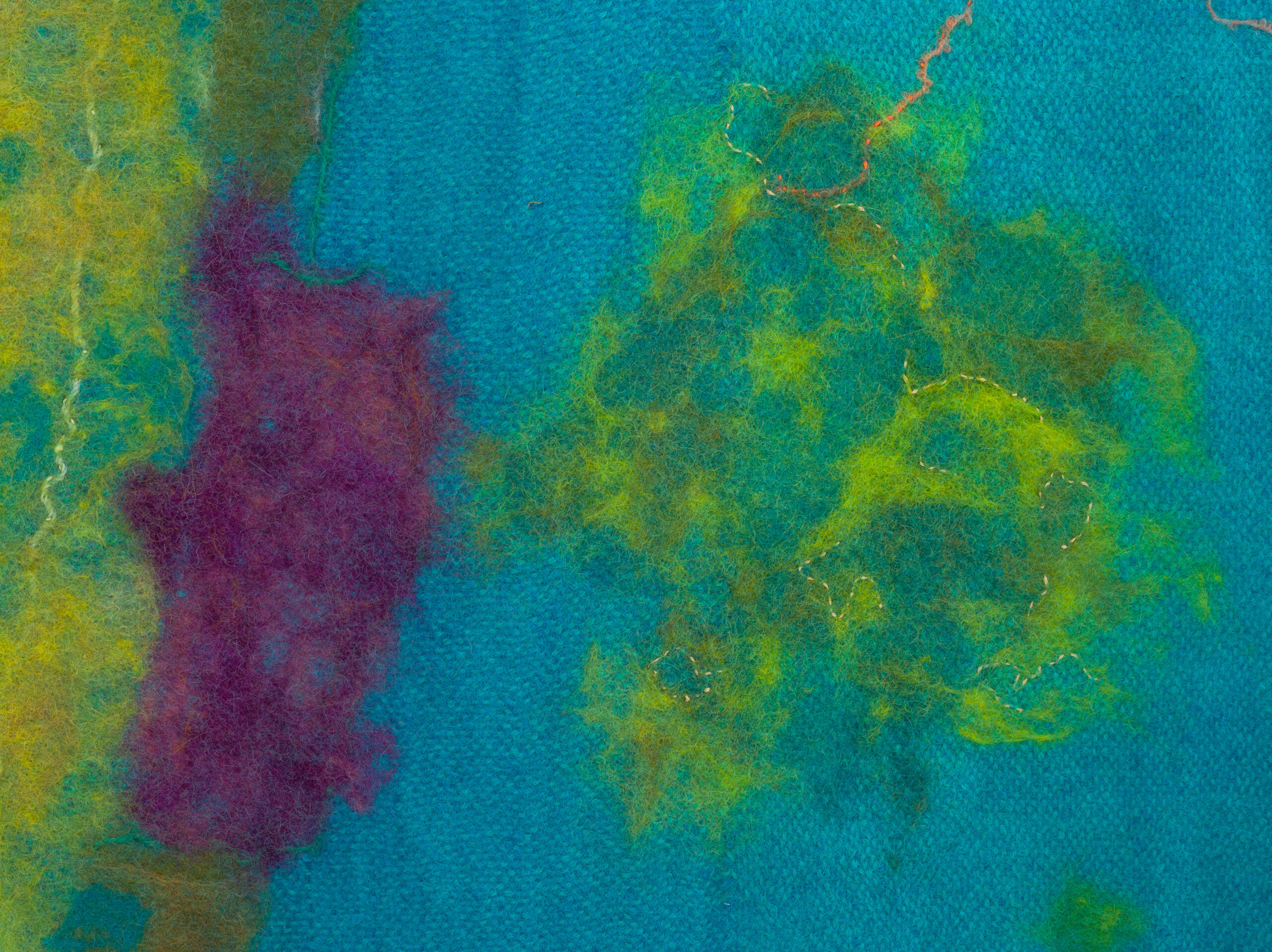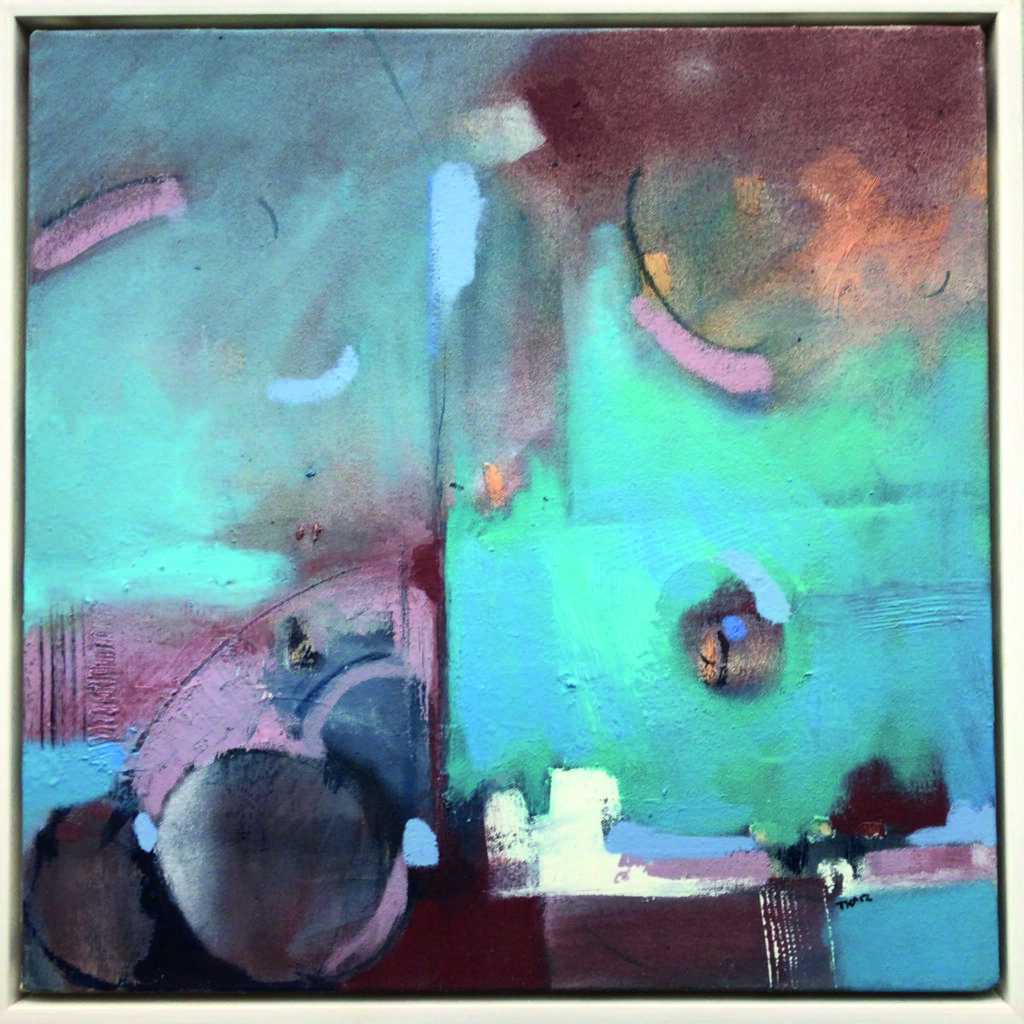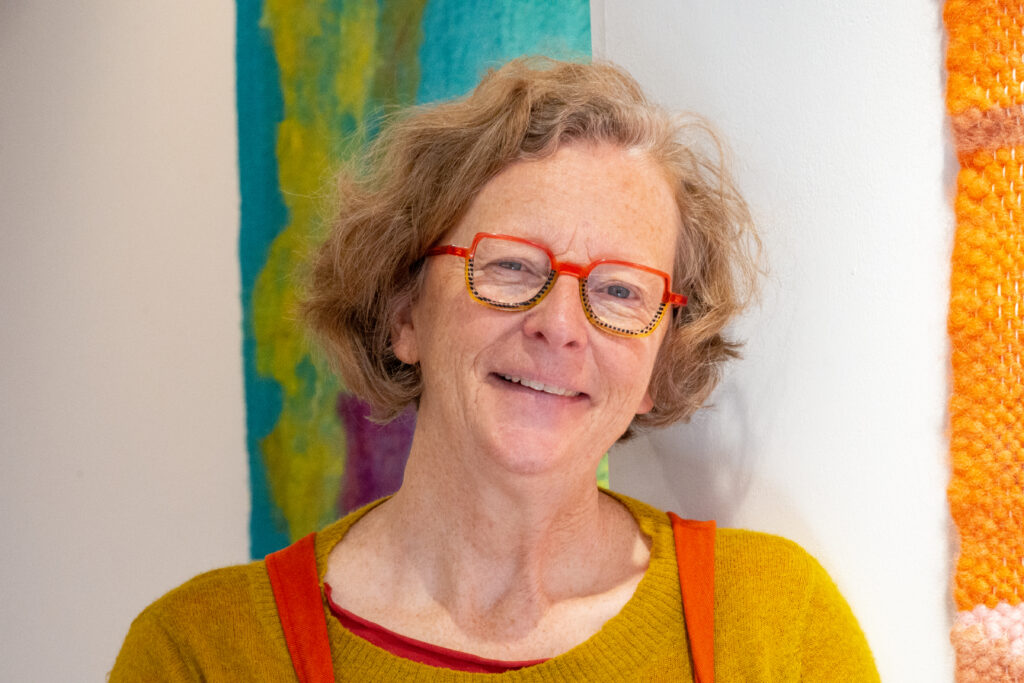
Rosalind Stoddart’s textiles are woven with her affinity to the natural world. Sustainability is fundamental to her practice. It all starts in the fields surrounding her home where she grows and dries flowers, creates her own natural dyes and keeps alpacas, whose fleeces form the threads of her works, creating a tangible link between her art and lifestyle. As she says, “Each piece has its own unique story about how it works with and from nature”.
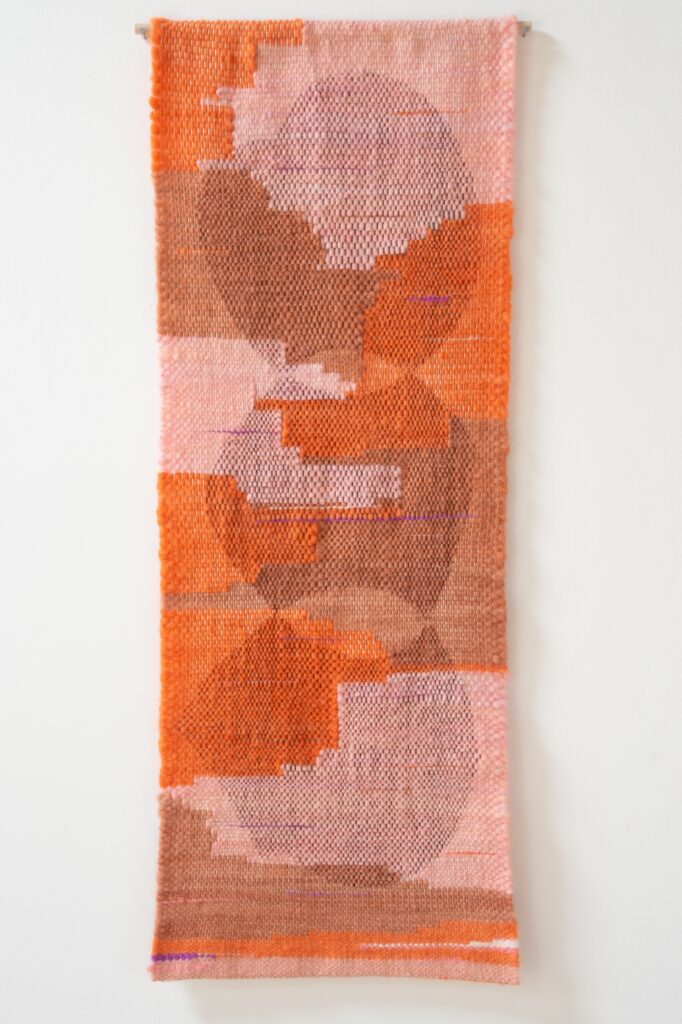
The shapes of seeds and “the excitement of them bursting forth in spring” inspired Stoddart’s first, large-scale tapestry-weaving wall hanging, ‘Full Spring’ (2022). Three overlapping circles move the viewer’s eyes from top to bottom, and across intersecting geometric shapes, blurring the boundaries between foreground and background with a dappled effect. Reminiscent of Sonia Delaunay’s Orphism, there is a great sense of movement between her shifting prisms of colour.
Stoddart’s starting point is always her “love of colour and its combinations”, evident here in the palette of burnt orange, peach and deep purple highlights. Although she has worked with textiles for the past 10 years, and particularly since the pandemic, this approach to colour indicates her earlier career in fine art, and one influenced by British Modernism. Like Ben Nicholson and Patrick Heron, she explored and experimented with pure form, colour and shapes on canvas, as well as in non-representational sculptures and prints.
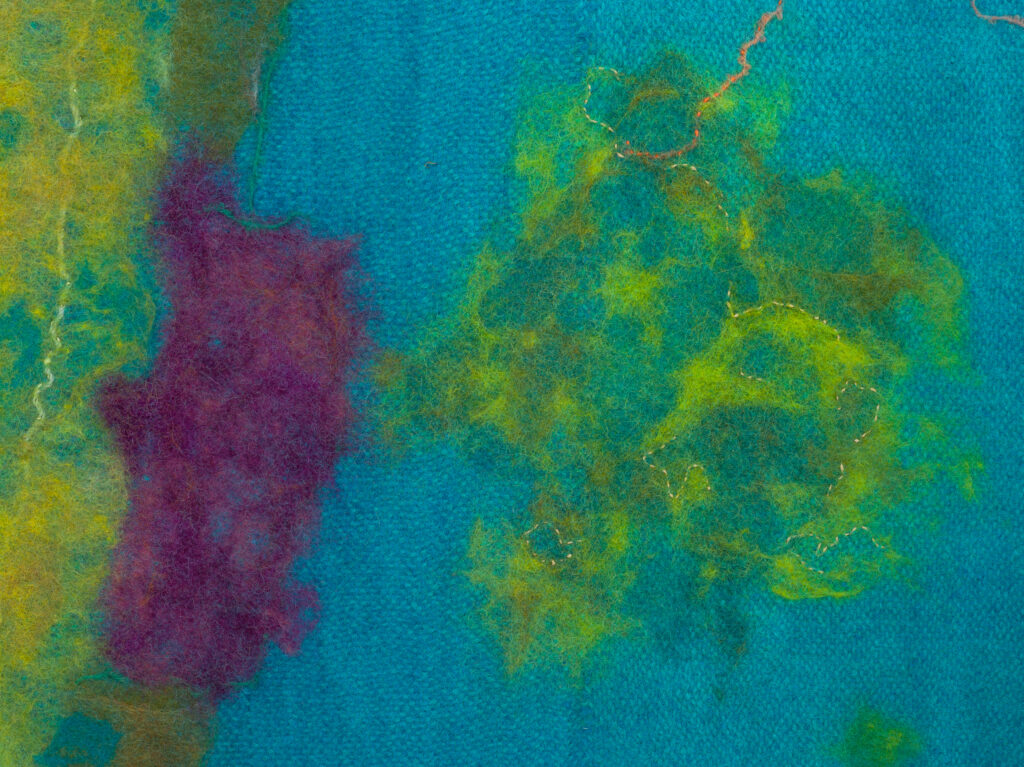
She carries this deceptively simple use of form, colour and shapes into her textiles, where texture also becomes a defining quality, rooting them more explicitly in the earth. Weaving their way through the composition of ‘Paths of Desire’ (2021) are strands of orange, which directly reference the winding and worn tracks that her alpacas leave in the grass. These hand-stitched details combine with the felting of an oak tree’s form, which blend into the background. Merging mediums, as well as perspectives, Stoddart brings a painterly quality to her experimental textiles.
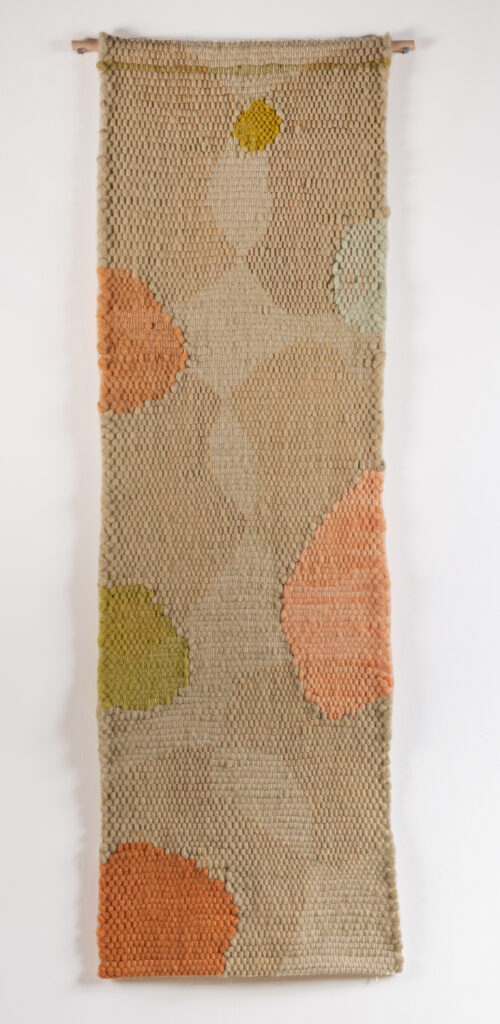
Process is hugely important to Stoddart, metaphorical of her distillation of nature’s abundance into individual works of art. ‘Rising sap’ (2023) has a palette of freshly unfurled poplar and other leaves, shimmering with silver, sap green and oranges, which the artist created by using onion skins, coreopsis, comfrey, ivy and nettles dye. Taking two years to grow and process her own inky dyes, this slow way of working “grounds” the artist, allowing her “to slow down in this fast-paced world, to take time to look and care”.
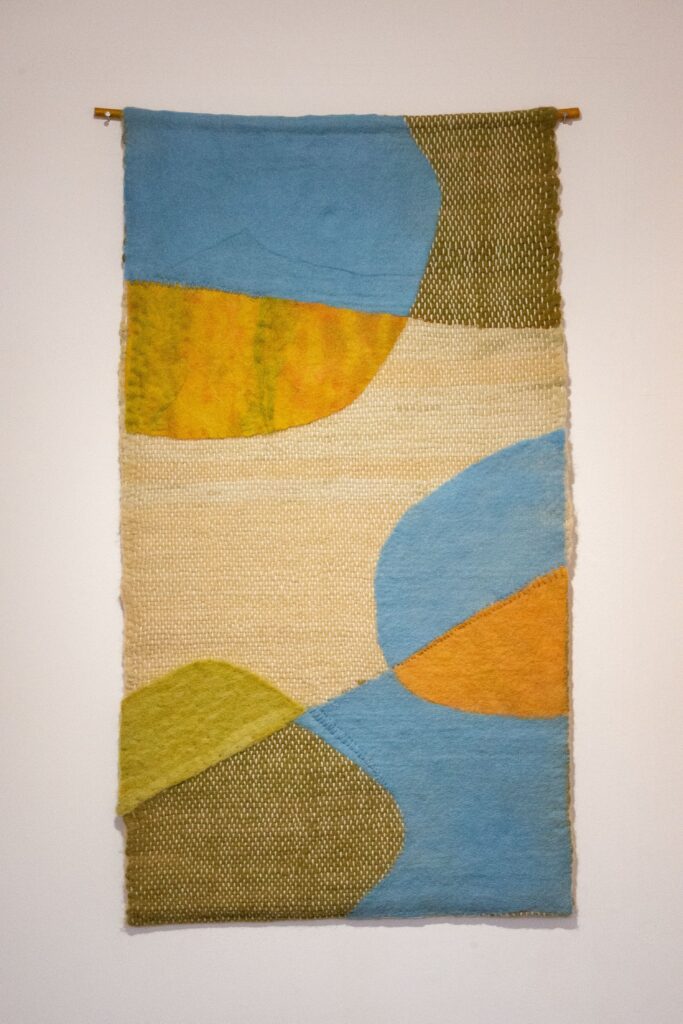
Exuding this calmness, her textiles act as windows into nature, invite viewers to engage in slow-looking at the crafted scenes. The large-scale wall hanging ‘Earth, light, hope’ (2023) is defined by its uplifting, expressive colour contrasts: organic shapes are segmented into yellow and blue, natural earthy green and creamy magnolia, and appear to dance across the surface, like falling leaves. Paring the world down from its complexities, Stoddart shares its beauty and joy with viewers in what she calls “a meeting point”.
The artist also encourages her audience to look more closely at the threads which hold her tapestries together. Using three techniques in works such as ‘Earth, light, hope’, she has combined hand weaving on a large wooden frame with felting and stitching, using alpaca rovings, felt, yarn, cotton cord and collage elements. Rather than hiding her process, she chooses to “keep it open”, exposing the weft and warp lines to share the structures of her object, while breaking all traditional rules of tapestry weaving.
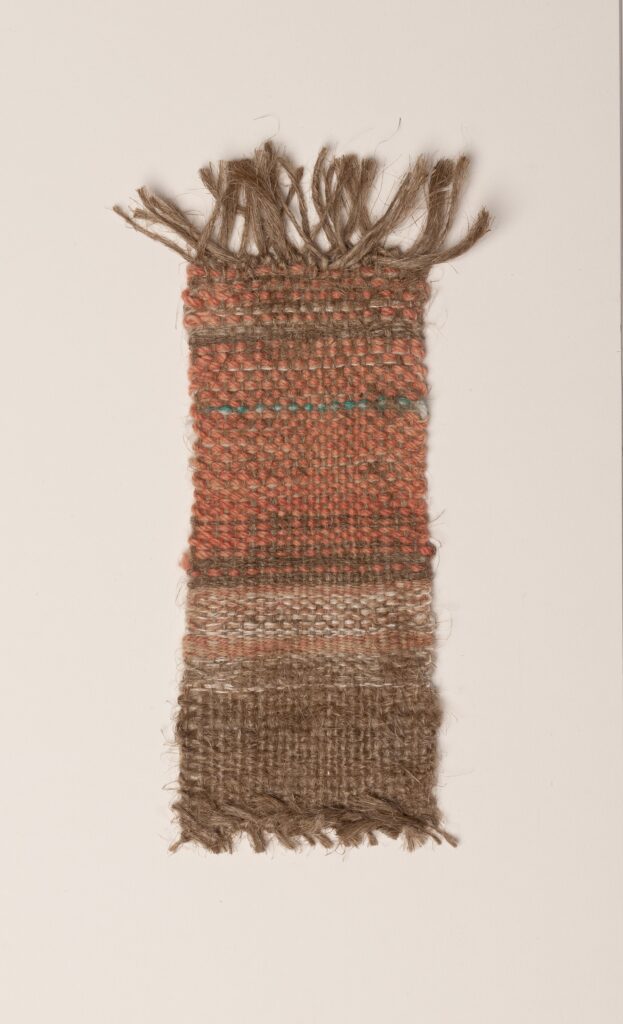
Similarly, Stoddart’s series of smaller ‘Earth Bound’ pieces deliberately destabilise the boundaries between fine art and craft. These exquisite wall hangings are box-framed without glass – to allow viewers’ a more immediate and tactile experience. Contained, they are given presence and focus, elevating them to the status of paintings, echoing the small-scale pictorial weavings of Anni Albers, who advanced craft into a modernist medium.
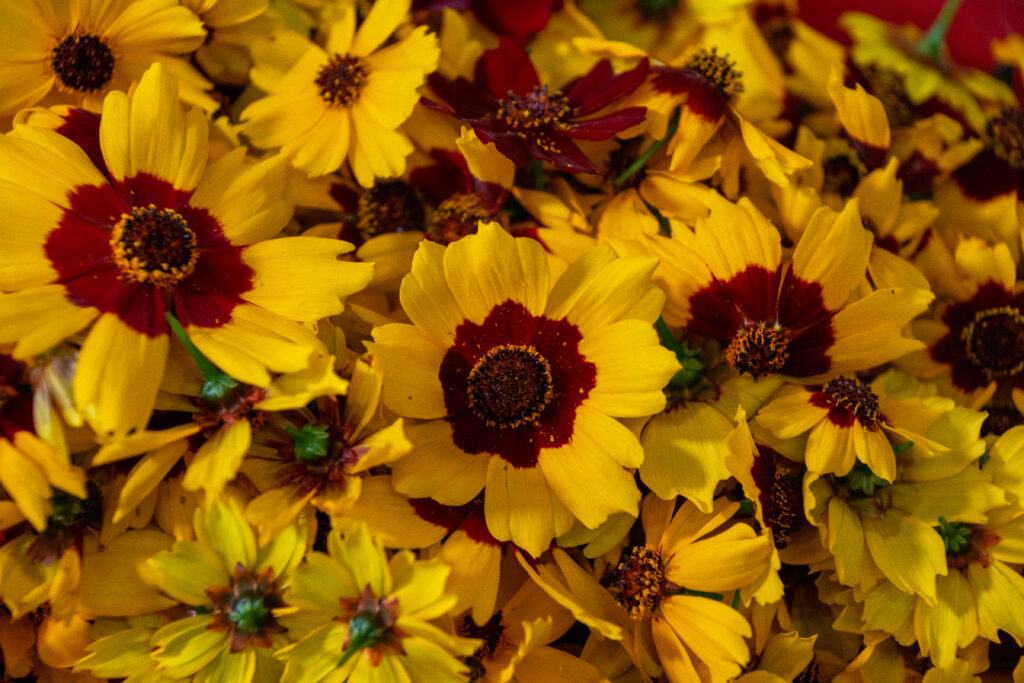
Like Albers, Stoddart is also interested in modernist design, including minimalism, Brutalist architecture and Romanesque buildings. Particularly since she was artist-in-residence at Peterborough Cathedral in 1989, large, open shapes have taken form in her textiles. Intricately designed, her woven works point to the structured blocks not only of built environments, but the fabrics of the natural world. With a “love of working very small and very big”, Stoddart’s opposing scales are also reminiscent of nature, comprised of both grand vistas and tiny details.
In ‘Earth Bound #W010’, beauty exists in the sculptural detailing, including its combination of textures. The roughness of the flax rubs against the softness of the alpaca fleece, with considered layers of earthy colours inspired by a Lucy Rie pot glazed brown and pink, with one singing turquoise line. Recently exhibited at Birmingham’s RBSA Gallery as part of the joint show ‘Woven from the field’ with willow weaver, Sue Kirk, this textile seemed ready to escape from its box and climb up the white walls. Stoddart contains nature on its own terms, giving it space to breathe.
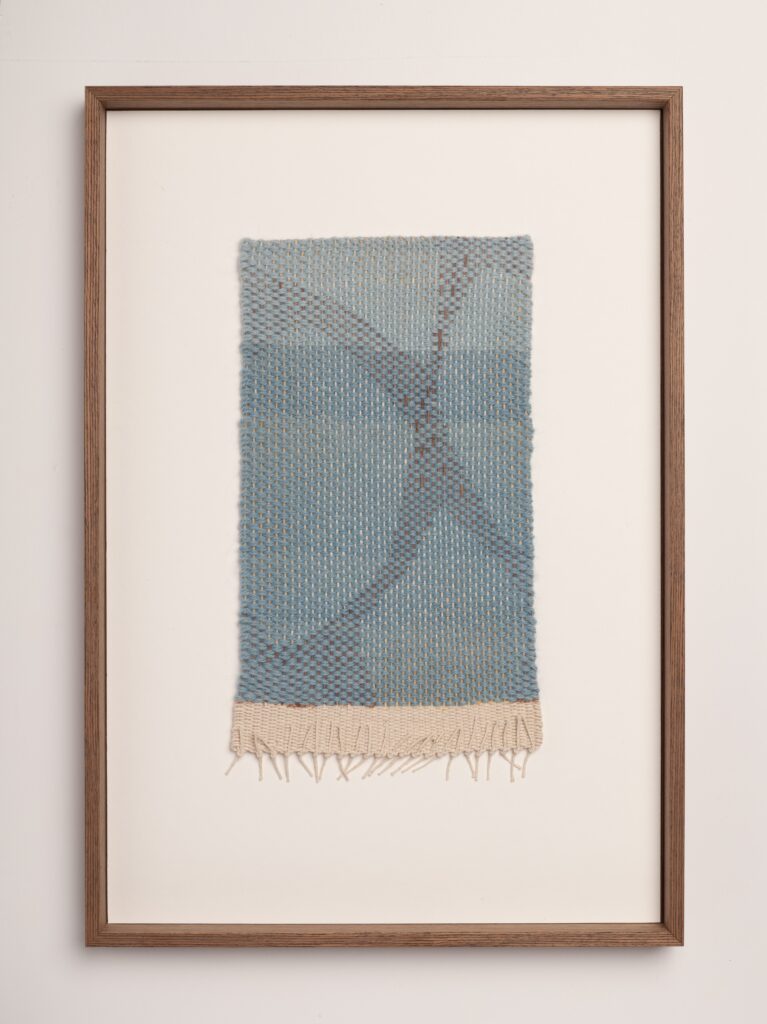
Developing her practice further still, Stoddart has also begun to explore the patterned cells and structures beneath the surface of nature, as if delving inside the plants she grows and cares for. In works such as ‘Flow’ (2023), she has cut into the weft to show the warp, making visible the threads that hold this composition together. Composed with Japanese indigo and taking on more of a fluid, meditative quality, this work transmits the artist’s closeness to the natural world, which she not only observes, but works directly with, following its waves.
Stoddart’s intuitive cycles of making should be considered a collaboration with the natural world, which she extends to the viewer, “I want people to connect with it, with the takeaway of living a calmer life”. From her small-scale ‘Earth Bound’ works to the huge, woven wall hangings, Stoddart invites viewers to stand back and take in her overall compositions, before stepping forwards to find intricate details. Reflecting the world’s organic abstraction and abundance, Stoddart’s enthralling textiles share the message that every thread of nature matters.
You can visit the artist’s website here, and follow her on Instagram @rosalindstoddart
